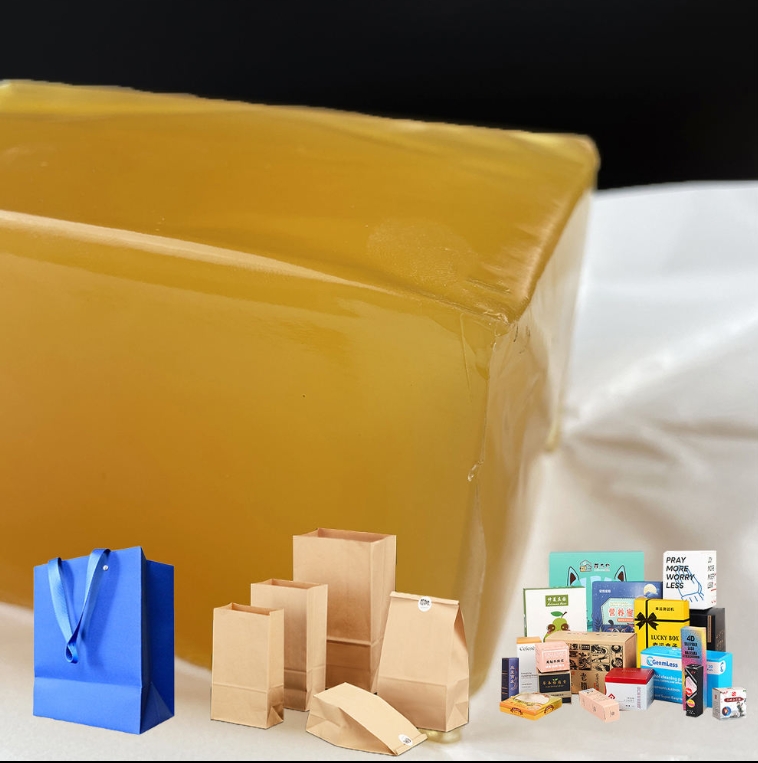I. Bookbinding Adhesive
1. Types and Characteristics
EVA Hot-melt Adhesive (Ethylene-Vinyl Acetate)
Features: Rapid curing (cooling molding), good flexibility, low cost.
Applications: Perfect binding (paperbacks), hardcover case bonding.
PUR Hot-melt Adhesive (Polyurethane Reactive)
Features: Forms high-toughness adhesive layer after moisture curing, resistant to extreme temperatures (-40℃~120℃), long service life.
Applications: High-end hardcovers, art picture albums.
Features: Eco-friendly and non-toxic, suitable for manual binding or children"s books.
2. Selection Points
Page Material: PUR adhesive for art paper to prevent page detachment; EVA adhesive for lightweight paper.
Environmental Requirements: Export books must comply with eco-standards like REACH and FDA.
II. Paper bag Handle Adhesive
1. Performance Requirements
High initial adhesion: Fix handles immediately to avoid displacement.
Tensile resistance: Withstand repeated pulling (especially for heavy-duty paper bags).
Environmental protection: Non-toxic and odorless for direct hand contact.
2. Common Adhesive Types
High-strength Water-based Acrylic Adhesive
Eco-friendly and quick-drying, suitable for food packaging bags (e.g., milk tea bags, takeout bags).
Hot-melt Pressure-sensitive Adhesive (HMPSA)
Instant bonding, applicable for high-speed automatic handle pasting equipment.
Solvent-based Rubber Adhesive (phasing out)
Strong initial adhesion but contains VOCs, requiring ventilation.
3. Application Cases
Luxury shopping bags: Select high-transparency acrylic adhesive to avoid glue marks affecting aesthetics.
III. Paper Bag Seam Adhesive
1. Bonding Part Characteristics
Side seams: Require fold resistance to prevent cracking.
Bottom load-bearing: Need high shear resistance (especially for multi-layer kraft paper bags).
2. Adhesive Types
Modified Starch Adhesive
Low cost for ordinary shopping bags, but poor water resistance.
Water-based Polyurethane Adhesive (PUD)
High flexibility, withstands -30℃low temperature (e.g., frozen food packaging).
Latex (Natural Rubber)
High elasticity for high-grammage paper bags (e.g., cement bags, pet food bags).
3. Process Notes
After gluing, apply pressure (e.g., rolling or hot-air drying) to ensure bonding strength.
IV. Carton Sealing Tape
1. Classification and Features
BOPP Tape (Biaxially Oriented Polypropylene)
Standard type: Low cost for lightweight boxes (e.g., express parcels).
Reinforced type: With fiberglass addition for tear resistance (e.g., heavy equipment packaging).
Kraft Paper Tape
Eco-friendly and recyclable, suitable for green e-commerce packaging (e.g., Amazon Frustration-Free Packaging).
Cloth-based Tape
High tensile strength for irregular surfaces (e.g., pipeline packaging).
2. Adhesive Layer Types
Pressure-sensitive Adhesive (PSA): Peel-and-stick, divided into rubber-based (high initial adhesion) and acrylic-based (aging resistance).
Hot-melt adhesive coating: Requires heating activation for automatic sealing lines.
3. Selection Criteria
Adhesion: Adjust based on box material (e.g., high-adhesion glue for laminated cartons).
Environmental adaptability: Acrylic glue for low-temperature warehousing; rubber glue for high-temperature environments.
Usage and Storage Tips:
Temperature control: Hot-melt adhesives need constant-temperature melting tanks (EVA glue: ~160℃±10℃).
Substrate pretreatment: Corona treatment for laminated or inked surfaces to enhance adhesion.
Eco-certification: Prioritize water-based adhesives with FSC certification and APEO-free formulations.
Key Terms Note:
PUR: Polyurethane Reactive
PSA: Pressure-sensitive Adhesive
BOPP: Biaxially Oriented Polypropylene
VOCs: Volatile Organic Compounds
APEO: Alkyl Phenol Ethoxylates (environmental hazard indicator)
FSC: Forest Stewardship Council (sustainable forestry certification)





